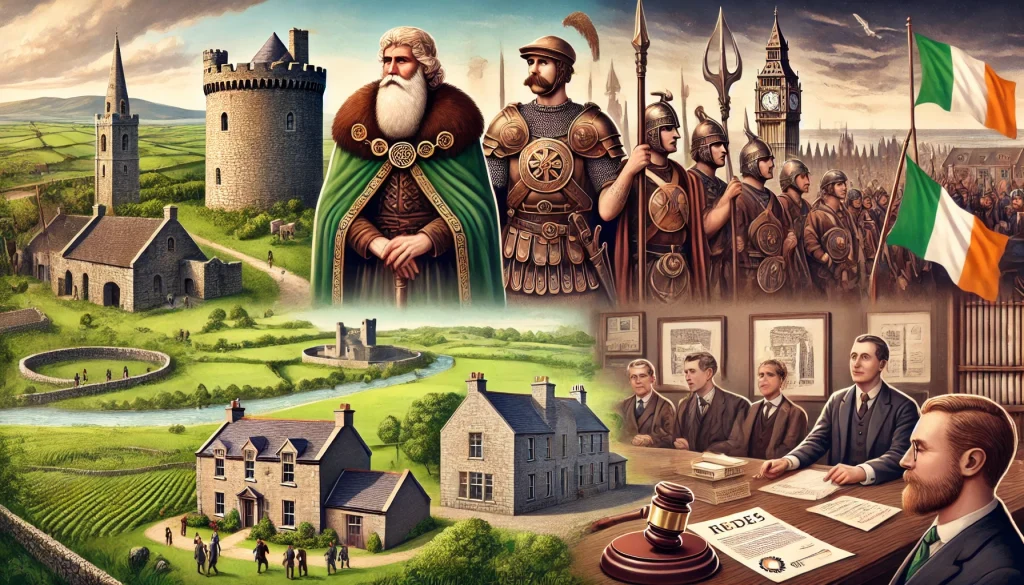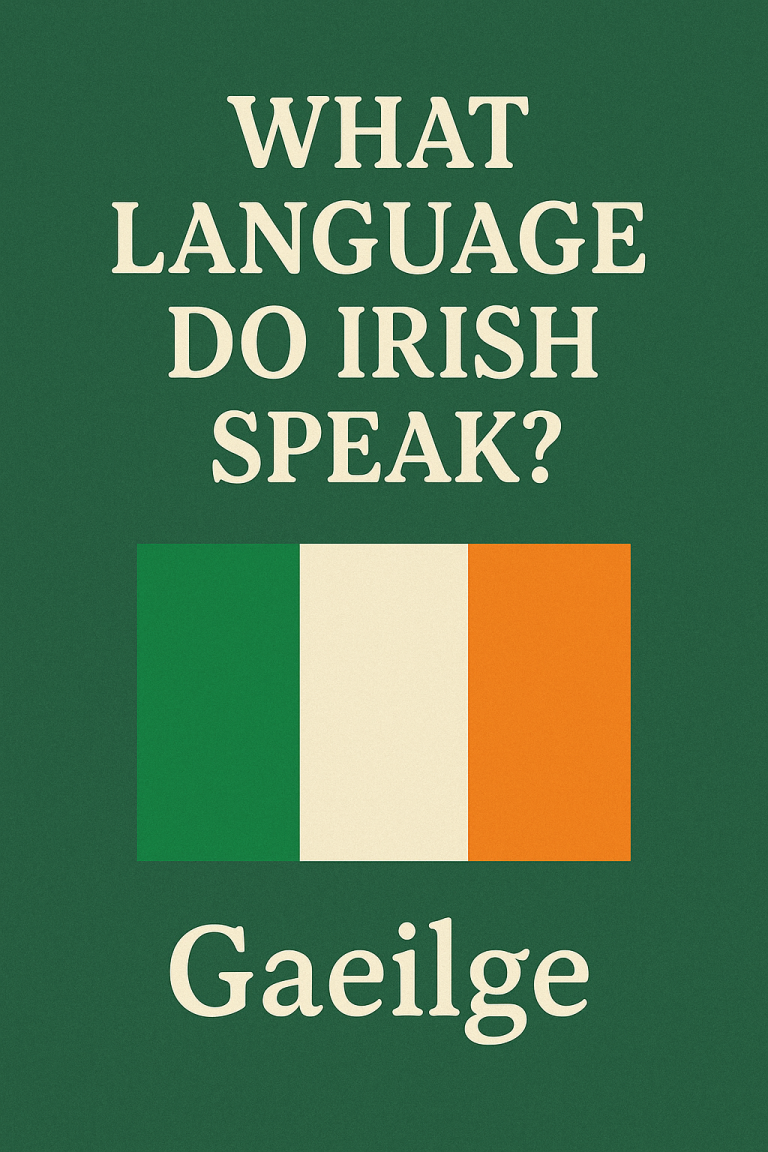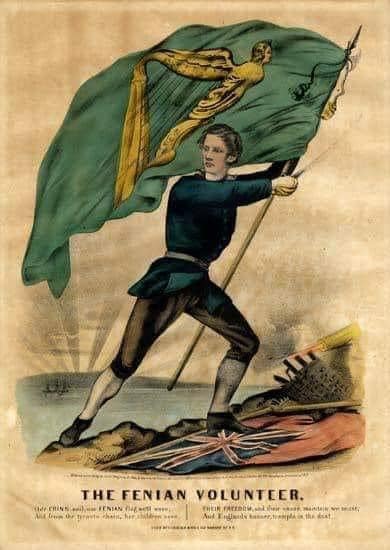Ireland’s land ownership history is a fascinating journey that spans from the ancient Brehon laws of the medieval Gaelic clans to the complex modern property laws governing ownership today.
Understanding this transformation requires an exploration of the Brehon legal system, English colonial rule, the struggles of Catholics for land ownership, and the evolution of land reform acts in Ireland.
This blog will examine these significant historical shifts while answering key questions about Irish land laws, clan systems, and legal changes that shaped modern property ownership in Ireland.
The Early Days of Land Ownership in Ireland: Brehon Law and the Gaelic Clans
Before English rule, Irish society was governed by the Brehon laws, an oral and customary legal system that was later written down. These laws were central to land ownership in Ireland and differed significantly from feudal English law.
What is Brehon Law in Ireland?
The Brehon law system was Ireland’s native legal framework before the Norman invasion (1169) and remained influential until the 17th century. Unlike English common law, Brehon law was tribal and community-based, ensuring land was owned collectively by the clan rather than an individual.
List of Brehon Laws Related to Land Ownership:
- Land was owned by the clan rather than an individual.
- A king (rí) could not sell or permanently give away land—it belonged to the people.
- Only the derbfhine (extended kin group) had rights to inherit land.
- Women had certain property rights, although these were limited.
- Land disputes were settled by brehons (judges) rather than a centralized authority.
(For more on buying land in modern Ireland, check out this guide: Buying a Home in Ireland – What Foreigners Need to Know).
The Norman and Tudor Conquests: The End of Gaelic Land Laws
The Norman invasion (12th century) introduced English feudalism to Ireland, disrupting Gaelic land laws. However, many native Irish lords retained control of their lands under a mix of Brehon law and feudal law.
This changed drastically under the Tudor re-conquest (16th century), as English monarchs sought to enforce English property laws.
What is Poynings’ Law in Ireland?
Introduced in 1494, Poynings’ Law made the Irish Parliament subordinate to the English Crown, ensuring that land and property laws in Ireland would follow English legal traditions.
What is Irish Clan Law?
Despite English interference, many Irish clans (tuatha) continued to recognize the traditional Brehon system of collective land ownership. However, by the 17th century, English landlords had displaced the Gaelic order, seizing land through confiscations and plantations.
The 17th and 18th Centuries: Catholic Dispossession and Protestant Landlords
The 1600s and 1700s saw massive land confiscations from Irish Catholics, particularly after events like the Cromwellian Conquest (1650s) and the Williamite War (1690s). By 1703, over 90% of Irish land was controlled by Protestants.
Were Catholics Allowed to Own Land in Ireland?
Under Penal Laws (late 17th-18th century), Irish Catholics were barred from owning land worth more than 5 pounds. If a Catholic landowner died, their estate had to be divided among all sons, weakening Catholic landholding further.
Who Were the Protestant Landowners in Ireland?
After confiscations, the main Protestant landowning class included:
- English settlers who received land under the Plantations of Ireland.
- Scottish Presbyterians in Ulster (e.g., Hamilton and Montgomery estates).
- Anglo-Irish landlords, including families like the Butlers, FitzGeralds, and Beresfords.
This period saw the rise of tenant farming, where Catholics rented land from Protestant landlords under harsh conditions.
The 19th Century: Land Wars and Tenant Rights
The 1800s saw growing agitation for Irish tenant farmers to gain rights over the land they worked. This period witnessed major reforms through Land Acts.
What is the Land Law (Ireland) Act 1887?
This act, passed under Prime Minister Salisbury, allowed Irish tenants to seek rent reductions and better tenancy terms. However, it did not transfer land ownership to tenants.
What is the Gladstone Land Act?
The 1870 and 1881 Land Acts, introduced by British Prime Minister William Gladstone, were early attempts at land reform. They allowed tenants to:
- Claim compensation for eviction.
- Secure fixed-term leases.
- Buy land with government assistance.
However, landlords still had power, and Irish farmers demanded full land ownership.
The 20th Century: The Path to Land Ownership for Irish Farmers
Irish tenant farmers finally gained ownership rights through various Land Acts in the early 20th century.
What is the Land Purchase Act Ireland?
The Land Purchase Acts (1885–1923) enabled Irish tenants to buy their farms with government-backed loans. By 1923, over 80% of Irish farmers owned their land.
When Could Irish Own Land?
While limited ownership existed before, large-scale Irish land ownership became possible only after:
- The Land Acts (1881–1923).
- The Irish Free State (1922), which removed English legal barriers.
Modern Land Ownership in Ireland
Today, Ireland’s land ownership system is based on private property rights, governed by laws including:
- The Registration of Title Act (1964).
- The Land and Conveyancing Law Reform Act (2009).
What Are the Different Types of Land Ownership in Ireland?
- Freehold – Full ownership with no landlord.
- Leasehold – Ownership for a fixed term (e.g., 99-year leases).
- Co-ownership – Joint ownership (e.g., married couples).
- State-owned land – Managed by the Irish government.
For more insights on buying property in Ireland, check out this guide: Buying a Home in Ireland.
From Clans to Private Property
The history of land ownership in Ireland is a story of clan-based rule, colonial dispossession, tenant struggles, and eventual land reforms. From the Brehon laws of ancient Ireland to the modern Land Acts, the Irish people have fought long and hard for their right to own land.
If you want to trace your family’s land-owning history, you might ask: What is my Irish clan? Researching clan records and local property archives can help uncover ancestral connections.
Key Takeaways:
- Brehon law promoted clan-based land ownership.
- English rule introduced feudal land control.
- Penal Laws severely restricted Catholic land ownership.
- 19th-century Land Acts allowed tenants to buy their farms.
- Modern Irish property law ensures private land ownership.
For further reading, check out: Buying Property in Ireland – Foreigner’s Guide.








1 thought on “Land Ownership in Ireland: From Medieval Clans to Modern Property Law”
Comments are closed.